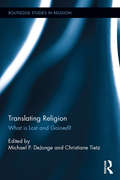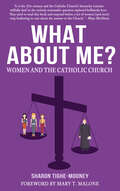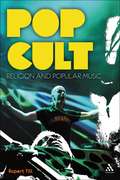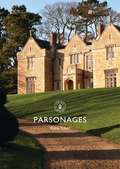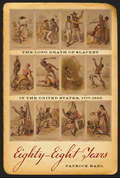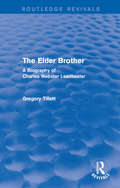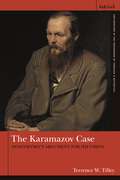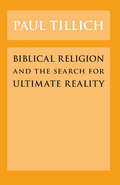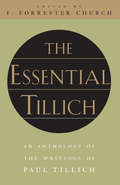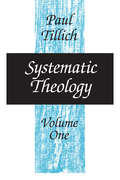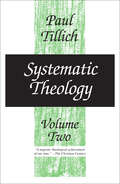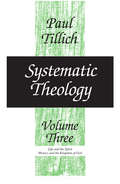- Table View
- List View
Translating Religion: What is Lost and Gained? (Routledge Studies in Religion)
by Christiane Tietz Michael P. DeJongeTranslating Religion advances thinking about translation as a critical category in religious studies, combining theoretical reflection about processes of translation in religion with focused case studies that are international, interdisciplinary, and interreligious. By operating with broad conceptions of both religion and translation, this volume makes clear that processes of translation, broadly construed, are everywhere in both religious life and the study of religion; at the same time, the theory and practice of translation and the advancement of translation studies as a field has developed in the context of concerns about the possibility and propriety of translating religious texts. The nature of religions as living historical traditions depends on the translation of religion from the past into the present. Interreligious dialogue and the comparative study of religion require the translation of religion from one tradition to another. Understanding the historical diffusion of the world’s religions requires coming to terms with the success and failure of translating a religion from one cultural context into another. Contributors ask what it means to translate religion, both textually and conceptually, and how the translation of religious content might differ from the translation of other aspects of human culture. This volume proposes that questions on the nature of translation find particularly acute expression in the domains of religion, and argues that theoretical approaches from translation studies can be fruitfully brought to bear on contemporary religious studies.
What About Me? Women and the Catholic Church
by Sharon Tighe-MooneyOne woman's investigation of the role of women in the Christian Church since its inception, as she counters the Roman Catholic church's argument for excluding them from the priesthood Details the gradual exclusion of women from positions of power as the Roman Catholic Church evolved. Accessible account from the viewpoint of an ordinary woman in the Church. Cover quotes from Mary McAleese, Fr. Tony Flannery and Mary T. Malone. What About Me? Women and the Catholic Church is an exploration by an ordinary woman, born into the Catholic faith of the arguments given to exclude her from ministry. Using her research skills, Sharon examines the New Testament, Christian writings and Papal documents. It is a personal quest to shed light on the story of women in the Christian movement from its earliest days to the present. The objective of the book is to explore, inform, speculate and question and it should appeal to a general audience. The context of the book is the 2010 move by Pope Benedict XVI to elevate the ‘crime’ of ordaining women to Catholic ministry and the subsequent censoring of religious personnel who questioned this edict. This book details a quest to find out where the strong antipathy towards women in the Roman Catholic Church's institutional mindset comes from.
Pop Cult: Religion and Popular Music
by Rupert TillAt a time when fundamentalism is on the rise, traditional religions are in decline and postmodernity has challenged any system that claims to be all-defining, young people have left their traditional places of worship and set up their own, in clubs, at festivals and within music culture. Pop Cults investigates the ways in which popular music and its surrounding culture have become a primary site for the location of meaning, belief and identity. It provides an introduction to the history of the interactions of vernacular music and religion, and the role of music in religious culture. Rupert Till explores the cults of heavy metal, pop stars, club culture and virtual popular music worlds, investigating the sex, drug, local and death cults of the sacred popular, and their relationships with traditional religions. He concludes by discussing how and why popular music cultures have taken on many of the roles of traditional religions in contemporary society.
Pop Cult: Religion and Popular Music
by Rupert TillAt a time when fundamentalism is on the rise, traditional religions are in decline and postmodernity has challenged any system that claims to be all-defining, young people have left their traditional places of worship and set up their own, in clubs, at festivals and within music culture. Pop Cults investigates the ways in which popular music and its surrounding culture have become a primary site for the location of meaning, belief and identity. It provides an introduction to the history of the interactions of vernacular music and religion, and the role of music in religious culture. Rupert Till explores the cults of heavy metal, pop stars, club culture and virtual popular music worlds, investigating the sex, drug, local and death cults of the sacred popular, and their relationships with traditional religions. He concludes by discussing how and why popular music cultures have taken on many of the roles of traditional religions in contemporary society.
Parsonages (Shire Library)
by Kate TillerFrom the middle ages to the present day the houses of local clergy – parsonages, vicarages and rectories – have been among the most significant buildings in parishes throughout England. Architecturally some of the best and most fully documented domestic buildings, their history is that of the small and medium sized house, from medieval vernacular to the bespoke designs of leading Victorian architects and the more modest homes of today's clergy. The lives lived in the parsonage, factual and fictional (from Austen to Trollope and the televised struggles of 'Rev' in London's East End in the 2010s) reveal not just a building, but a hub of spiritual and secular activity, at the heart of local life and linking it to wider, national history. In this engaging introduction, Kate Tiller brings together the architectural and social histories of the parsonage, drawing on the evidence of buildings, archival and literary accounts, and contemporary and modern images, to depict parsonages, their occupants and how their histories may be traced.
Parsonages: Improvisation And The Theatre (Shire Library #786)
by Kate TillerFrom the middle ages to the present day the houses of local clergy – parsonages, vicarages and rectories – have been among the most significant buildings in parishes throughout England. Architecturally some of the best and most fully documented domestic buildings, their history is that of the small and medium sized house, from medieval vernacular to the bespoke designs of leading Victorian architects and the more modest homes of today's clergy. The lives lived in the parsonage, factual and fictional (from Austen to Trollope and the televised struggles of 'Rev' in London's East End in the 2010s) reveal not just a building, but a hub of spiritual and secular activity, at the heart of local life and linking it to wider, national history. In this engaging introduction, Kate Tiller brings together the architectural and social histories of the parsonage, drawing on the evidence of buildings, archival and literary accounts, and contemporary and modern images, to depict parsonages, their occupants and how their histories may be traced.
The Elder Brother: A Biography of Charles Webster Leadbeater (Routledge Revivals)
by Gregory TillettA leading figure in the Theosophical Society, Leadbeater was a prolific author, writing on subjects ranging from Buddhism, Masonic history and the origins of Christianity through to the power of thought and the fourth dimension. Leadbeater was also the force behind Annie Besant, the discoverer and educator if Krishnamurti, and became Presiding Bishop of the Liberal Catholic Church. For all his influence Charles Leadbeater remains largely unknown as a man. This biography, first published in 1982, dispels many of the mysteries surrounding his life, and Leadbeater emerges as neither evil degenerate or infallible saint, but as a complex and eccentric adventurer into the realm of the occult. This title will be of particular interest to students of history and theology.
The Elder Brother: A Biography of Charles Webster Leadbeater (Routledge Revivals)
by Gregory TillettA leading figure in the Theosophical Society, Leadbeater was a prolific author, writing on subjects ranging from Buddhism, Masonic history and the origins of Christianity through to the power of thought and the fourth dimension. Leadbeater was also the force behind Annie Besant, the discoverer and educator if Krishnamurti, and became Presiding Bishop of the Liberal Catholic Church. For all his influence Charles Leadbeater remains largely unknown as a man. This biography, first published in 1982, dispels many of the mysteries surrounding his life, and Leadbeater emerges as neither evil degenerate or infallible saint, but as a complex and eccentric adventurer into the realm of the occult. This title will be of particular interest to students of history and theology.
The Karamazov Case: Dostoevsky's Argument for His Vision
by Terrence W. TilleyThis is a new interpretation of Dostoevsky's novel The Brothers Karamazov that scrutinizes it as a performative event (the “polyphony” of the novel) revealing its religious, philosophical, and social meanings through the interplay of mentalités or worldviews that constitute an aesthetic whole. This way of discerning the novel's social vision of sobornost' (a unity between harmony and freedom), its vision of hope, and its more subtle sacramental presuppositions, raises Tilley's interpretation beyond the standard “theology and literature” treatments of the novel and interpretations that treat the novel as providing solutions to philosophical problems.Tilley develops Bakhtin's thoughtful analysis of the polyphony of the novel using communication theory and readers/hearer response criticism, and by using Bakhtin's operatic image of polyphony to show the error of taking "faith vs. reason", argues that at the end of the novel, the characters learned to carry on, in a quiet shared commitment to memory and hope.
The Karamazov Case: Dostoevsky's Argument for His Vision
by Terrence W. TilleyThis is a new interpretation of Dostoevsky's novel The Brothers Karamazov that scrutinizes it as a performative event (the “polyphony” of the novel) revealing its religious, philosophical, and social meanings through the interplay of mentalités or worldviews that constitute an aesthetic whole. This way of discerning the novel's social vision of sobornost' (a unity between harmony and freedom), its vision of hope, and its more subtle sacramental presuppositions, raises Tilley's interpretation beyond the standard “theology and literature” treatments of the novel and interpretations that treat the novel as providing solutions to philosophical problems.Tilley develops Bakhtin's thoughtful analysis of the polyphony of the novel using communication theory and readers/hearer response criticism, and by using Bakhtin's operatic image of polyphony to show the error of taking "faith vs. reason", argues that at the end of the novel, the characters learned to carry on, in a quiet shared commitment to memory and hope.
Biblical Religion and the Search for Ultimate Reality
by Paul TillichDr. Tillich shows here that in spite of the contrast between philosophical and biblical language, it is neither necessary nor possible to separate them from each other. On the contrary, all the symbols used in biblical religion drive inescapably toward the philosophical quest for being. An important statement of a great theologian's position, this book presents an eloquent plea for the essential function of philosophy in religious thought.
Biblical Religion and the Search for Ultimate Reality
by Paul TillichDr. Tillich shows here that in spite of the contrast between philosophical and biblical language, it is neither necessary nor possible to separate them from each other. On the contrary, all the symbols used in biblical religion drive inescapably toward the philosophical quest for being. An important statement of a great theologian's position, this book presents an eloquent plea for the essential function of philosophy in religious thought.
Biblical Religion and the Search for Ultimate Reality
by Paul TillichDr. Tillich shows here that in spite of the contrast between philosophical and biblical language, it is neither necessary nor possible to separate them from each other. On the contrary, all the symbols used in biblical religion drive inescapably toward the philosophical quest for being. An important statement of a great theologian's position, this book presents an eloquent plea for the essential function of philosophy in religious thought.
Biblical Religion and the Search for Ultimate Reality
by Paul TillichDr. Tillich shows here that in spite of the contrast between philosophical and biblical language, it is neither necessary nor possible to separate them from each other. On the contrary, all the symbols used in biblical religion drive inescapably toward the philosophical quest for being. An important statement of a great theologian's position, this book presents an eloquent plea for the essential function of philosophy in religious thought.
The Essential Tillich
by Paul Tillich"With this volume, Paul Tillich joins the ranks of the great Christian theologians such as Augustine of Hippo and Thomas Aquinas. . . .This volume, compiled by a noted minister and scholar, offers to the theological student, church worker, or, indeed, any serious reader struggling with the existential question, a tantalizing and illuminating introduction to perhaps the greatest mind of twentieth-century Protestant theology."—Booklist "Church testifies to the power Tillich provides him for his pastoral work, his intellectual formulation and his personal life. He projects, quite properly, that the 'essential' Tillich can do the same for others. . . ."—Christian Century "This book summarizes in Tillich's own words much of the best of his thought, still highly relevant today."—Library Journal "[Church] helps Tillich speak to an audience unfamiliar with the breadth and depth of his thought."—Religious Studies Review
Systematic Theology, Volume 1
by Paul TillichThis is the first part of Paul Tillich's three-volume Systematic Theology, one of the most profound statements of the Christian message ever composed and the summation and definitive presentation of the theology of the most influential and creative American theologian of the twentieth century. In this path-breaking volume Tillich presents the basic method and statement of his system—his famous "correlation" of man's deepest questions with theological answers. Here the focus is on the concepts of being and reason. Tillich shows how the quest for revelation is integral to reason itself. In the same way a description of the inner tensions of being leads to the recognition that the quest for God is implied in finite being. Here also Tillich defines his thought in relation to philosophy and the Bible and sets forth his famous doctrine of God as the "Ground of Being." Thus God is understood not as a being existing beside other beings, but as being-itself or the power of being in everything. God cannot be made into an object; religious knowledge is, therefore, necessarily symbolic.
Systematic Theology, Volume 1
by Paul TillichThis is the first part of Paul Tillich's three-volume Systematic Theology, one of the most profound statements of the Christian message ever composed and the summation and definitive presentation of the theology of the most influential and creative American theologian of the twentieth century. In this path-breaking volume Tillich presents the basic method and statement of his system—his famous "correlation" of man's deepest questions with theological answers. Here the focus is on the concepts of being and reason. Tillich shows how the quest for revelation is integral to reason itself. In the same way a description of the inner tensions of being leads to the recognition that the quest for God is implied in finite being. Here also Tillich defines his thought in relation to philosophy and the Bible and sets forth his famous doctrine of God as the "Ground of Being." Thus God is understood not as a being existing beside other beings, but as being-itself or the power of being in everything. God cannot be made into an object; religious knowledge is, therefore, necessarily symbolic.
Systematic Theology, Volume 1
by Paul TillichThis is the first part of Paul Tillich's three-volume Systematic Theology, one of the most profound statements of the Christian message ever composed and the summation and definitive presentation of the theology of the most influential and creative American theologian of the twentieth century. In this path-breaking volume Tillich presents the basic method and statement of his system—his famous "correlation" of man's deepest questions with theological answers. Here the focus is on the concepts of being and reason. Tillich shows how the quest for revelation is integral to reason itself. In the same way a description of the inner tensions of being leads to the recognition that the quest for God is implied in finite being. Here also Tillich defines his thought in relation to philosophy and the Bible and sets forth his famous doctrine of God as the "Ground of Being." Thus God is understood not as a being existing beside other beings, but as being-itself or the power of being in everything. God cannot be made into an object; religious knowledge is, therefore, necessarily symbolic.
Systematic Theology, Volume 1
by Paul TillichThis is the first part of Paul Tillich's three-volume Systematic Theology, one of the most profound statements of the Christian message ever composed and the summation and definitive presentation of the theology of the most influential and creative American theologian of the twentieth century. In this path-breaking volume Tillich presents the basic method and statement of his system—his famous "correlation" of man's deepest questions with theological answers. Here the focus is on the concepts of being and reason. Tillich shows how the quest for revelation is integral to reason itself. In the same way a description of the inner tensions of being leads to the recognition that the quest for God is implied in finite being. Here also Tillich defines his thought in relation to philosophy and the Bible and sets forth his famous doctrine of God as the "Ground of Being." Thus God is understood not as a being existing beside other beings, but as being-itself or the power of being in everything. God cannot be made into an object; religious knowledge is, therefore, necessarily symbolic.
Systematic Theology, Volume 2
by Paul TillichIn this volume, the second of his three-volume reinterpretation of Christian theology, Paul Tillich comes to grips with the central idea of his system—the doctrine of the Christ. Man's predicament is described as the state of "estrangement" from himself, from his world, and from the divine ground of his self and his world. This situation drives man to the quest for a new state of things, in which reconciliation and reunion conquer estrangement. This is the quest for the Christ.
Systematic Theology, Volume 2
by Paul TillichIn this volume, the second of his three-volume reinterpretation of Christian theology, Paul Tillich comes to grips with the central idea of his system—the doctrine of the Christ. Man's predicament is described as the state of "estrangement" from himself, from his world, and from the divine ground of his self and his world. This situation drives man to the quest for a new state of things, in which reconciliation and reunion conquer estrangement. This is the quest for the Christ.
Systematic Theology, Volume 2
by Paul TillichIn this volume, the second of his three-volume reinterpretation of Christian theology, Paul Tillich comes to grips with the central idea of his system—the doctrine of the Christ. Man's predicament is described as the state of "estrangement" from himself, from his world, and from the divine ground of his self and his world. This situation drives man to the quest for a new state of things, in which reconciliation and reunion conquer estrangement. This is the quest for the Christ.
Systematic Theology, Volume 2
by Paul TillichIn this volume, the second of his three-volume reinterpretation of Christian theology, Paul Tillich comes to grips with the central idea of his system—the doctrine of the Christ. Man's predicament is described as the state of "estrangement" from himself, from his world, and from the divine ground of his self and his world. This situation drives man to the quest for a new state of things, in which reconciliation and reunion conquer estrangement. This is the quest for the Christ.
Systematic Theology, Volume 3
by Paul TillichIn this volume, the third and last of his Systematic Theology, Paul Tillich sets forth his ideas of the meaning of human life, the doctrine of the Spirit and the church, the trinitarian symbols, the relation of history to the Kingdom of God, and the eschatological symbols. He handles this subject matter with powerful conceptual ability and intellectual grace. The problem of life is ambiguity. Every process of life has its contrast within itself, thus driving man to the quest for unambiguous life or life under the impact of the Spritual Presence. The Spritual Presence conquers the negativities of religion, culture, and morality, and the symbols anticipating Eternal Life present the answer to the problem of life.
Systematic Theology, Volume 3: History And The Kingdom Of God
by Paul TillichIn this volume, the third and last of his Systematic Theology, Paul Tillich sets forth his ideas of the meaning of human life, the doctrine of the Spirit and the church, the trinitarian symbols, the relation of history to the Kingdom of God, and the eschatological symbols. He handles this subject matter with powerful conceptual ability and intellectual grace. The problem of life is ambiguity. Every process of life has its contrast within itself, thus driving man to the quest for unambiguous life or life under the impact of the Spritual Presence. The Spritual Presence conquers the negativities of religion, culture, and morality, and the symbols anticipating Eternal Life present the answer to the problem of life.
